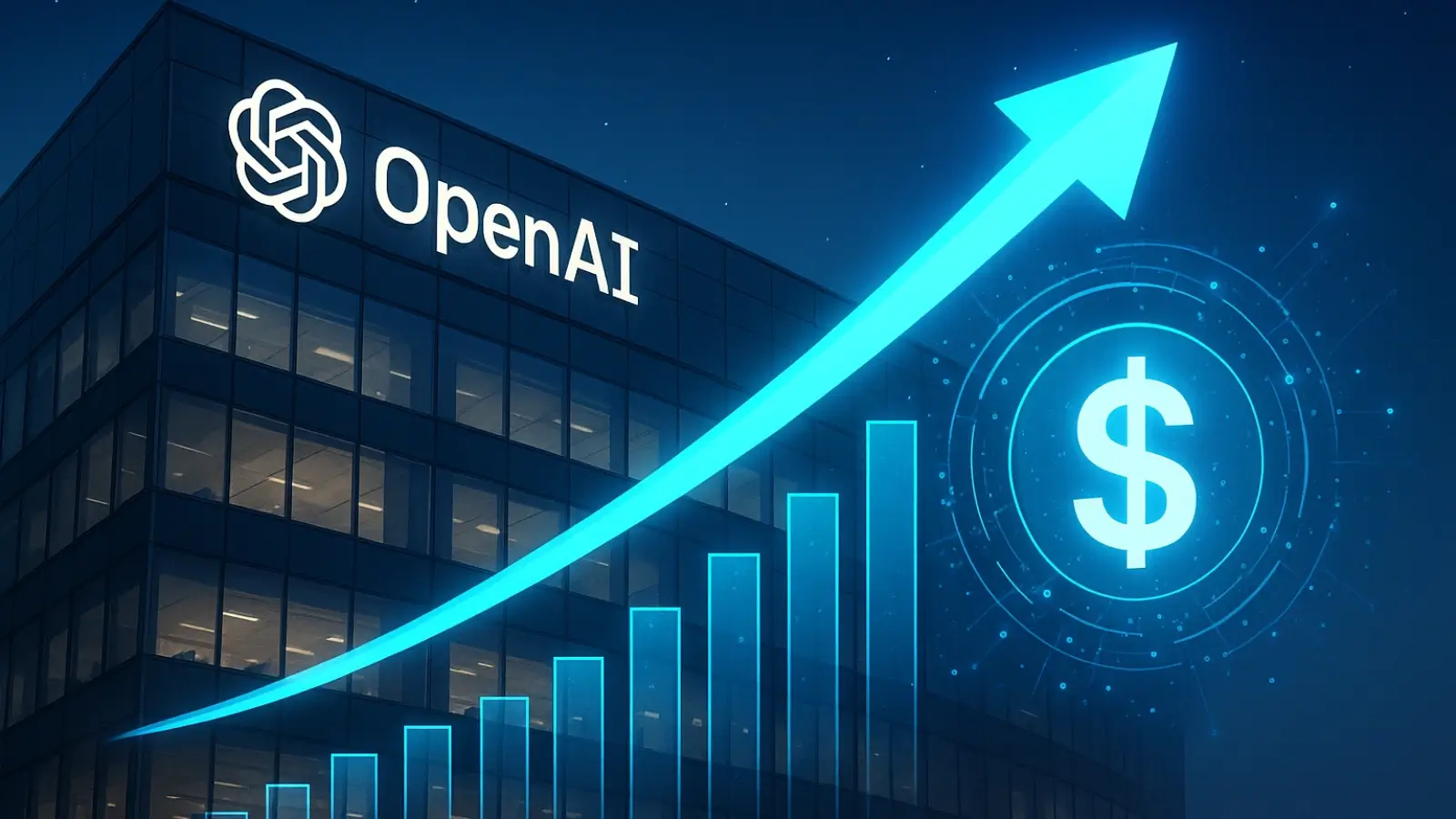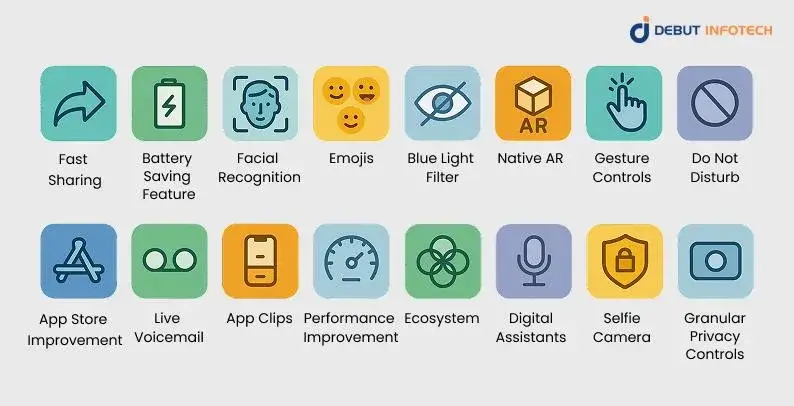


Android and iOS have continuously influenced each other's evolution in mobile technology. While Android leads the global market with a 71.88% share as of early 2025, Apple's iOS, holding 27.65%, has often set benchmarks in user experience and innovation. What's more, Android's adoption of features like facial recognition and gesture controls reflects this interplay. With over 3.3 billion Android users worldwide, integrating such features underscores the mutual influence shaping smartphone experiences today.
This article discusses seventeen Android features that draw inspiration from Apple's innovations, highlighting how the interplay of competition and adaptation drives technological advancement in mobile app development.
Let's get started:

Android's "Nearby Share" is essentially an echo of a feature on Apple phones called AirDrop, which was introduced in 2011. Built to send files from one nearby device to another, Nearby Share makes it easy to share files via Bluetooth, Wi-Fi, or WebRTC. The interface and operation are eerily similar to the Apple system, so much so that when it was first introduced, comparisons were drawn.
While effective, the delayed implementation highlights Android's reactive approach to user-friendly cross-device communication. In this area, Apple set an early standard.
Apple's Low Power Mode arrived in iOS 9 back in 2015. Android introduced a similar feature with Doze and later Battery Saver, adopting a comparable strategy of restricting background activity and reducing performance to extend battery life. While both platforms now offer customizable battery optimization, Android's implementation followed Apple's lead in prioritizing efficient power usage for longer screen-on time and reduced idle consumption.
Apple's more sophisticated facial recognition, called Face ID, arrived on the iPhone X in 2017 and made secure biometric access routine. Android OEMs followed soon after with less sophisticated versions of the same capabilities.
While some Android devices now offer infrared and 3D mapping, early iterations relied more on front-camera scans. It's clear Apple's secure, seamless model prompted Android manufacturers to improve their facial recognition and mobile app development frameworks considerably.
Apple popularized modern emoji usage by integrating a dedicated emoji keyboard in iOS 5. While Android eventually followed suit, early versions relied on third-party apps or manufacturer-specific implementations. Today, both platforms support Unicode emojis, but Apple consistently leads in design consistency and early adoption. Android's evolving emoji support and visual style updates reflect an effort to align more closely with Apple's expressive and widely loved emoji standards.
Night Shift, Apple's blue light reduction feature, launched in iOS 9.3 to promote better sleep by adjusting screen temperature in the evenings. Android integrated a similar feature called "Night Light" soon after, replicating both concept and timing automation.
While both aim to reduce eye strain and improve circadian rhythm alignment, Apple's initial rollout of this health-conscious tool spurred Android to prioritize built-in screen filtering options as well.
Apple's ARKit, launched in 2017, brought native augmented reality capabilities directly into iOS, setting a high benchmark for immersive mobile experiences. Google responded with ARCore, offering similar developer tools for AR integration within Android apps. Today, businesses looking to leverage these technologies often seek to hire mobile developers skilled in ARKit or ARCore to create cutting-edge applications.
Though ARCore has made significant strides, the concept of tightly embedded AR capabilities as a system-level service first took root in Apple's ecosystem, nudging Android to match both vision and execution.
With the iPhone X, Apple replaced the home button with intuitive gesture-based navigation, streamlining interaction through swipes and taps. Android quickly adopted its own gesture system, moving away from traditional buttons.
Though Android's interpretation varies by manufacturer, the foundational swipe-to-go-home and multitask gestures mimic Apple's approach. The shift marked a broader industry trend—but it was Apple that set the tone for gesture-driven mobile interaction.
Apple's "Do Not Disturb" feature debuted in 2012 with iOS 6, offering users a simple way to silence notifications during meetings, bedtime, or focused tasks. Android added a nearly identical feature a few years later, complete with scheduling, caller exceptions, and visual indicators. This adoption gave users more control over interruptions. Still, the foundational idea and early user experience clearly stemmed from Apple's original implementation.
Apple's App Store redesign in 2017 introduced curated content, editorial recommendations, and improved app discovery. Google Play followed by implementing similar visual overhauls and content-first Android platform features. For any mobile app development company, these shifts emphasized the growing importance of user experience and discoverability in app ecosystems.
From daily app highlights to developer spotlights, the changes reflect Apple's influence on shaping user-centric app marketplaces. Android's efforts to enrich the Play Store experience were undeniably inspired by Apple's commitment to content curation and visual clarity.
Apple introduced Live Voicemail with iOS 17, letting users screen calls in real-time by reading transcribed messages as they're being left. Android is now rolling out similar functionality on Pixel devices via Google Assistant, allowing users to screen and interact with calls mid-voicemail.
While Android has long offered basic voicemail features, this more dynamic approach closely mirrors Apple's innovation in providing real-time communication control.
Apple introduced App Clips in iOS 14, allowing users to access lightweight versions of apps without full installation. Shortly after, Google unveiled Instant Apps with similar goals—streamlined access, reduced storage use, and quick user engagement.
While both ecosystems now support these mini-apps, Apple's tight integration and clear interface set the initial benchmark. Android's version continues to evolve, often echoing Apple's refined balance between utility and simplicity.
In every iOS update, Apple's focus is efficiency, faster app launches, lower CPU load, and smoother animations. Android, traditionally even more fragmented due to different hardware, has more slowly moved in the same direction, especially with Android 12's focus on system performance and battery management.
Apple's lead in controlled performance tuning spurred Android's deeper integration of machine learning and background process management to match user expectations for consistent, fast, and fluid experiences.
For some time, Apple's smooth ecosystem — the iPhone, the Mac, the iPad, and the Apple Watch — has had a significant advantage in the gadget market, with features like Handoff, AirDrop and Universal Clipboard. Android and Google have responded with deeper integrations among Android phones, Chromebooks and Wear OS devices.
While still not as fluid as Apple's, Android's ecosystem is evolving, clearly modeled on Apple's philosophy of interconnected, cross-device functionality that enhances continuity and user convenience.
Siri debuted in 2011, helping to kickstart the age of smartphone voice assistants. Google Assistant arrived subsequent to Siri but quickly became better in all sorts of ways, outclassing Siri in several categories.
However, Apple introduced the idea of a baked-in, always-available assistant that can handle tasks, answer questions, and adjust settings. The focus on conversational AI in Android was, in part, a reaction to the popularity of Siri, and Apple's relatively early adoption of natural speech as an interface in mobile.
The iPhone 4 was the first widely used phone with a front-facing camera for selfies and video calls, helping to spur a trend in mobile photography. Android makers, too, followed suit, incrementally upgrading the front camera with wider lenses, night modes and beauty filters. Though innovations now flow both ways, the origin of the selfie boom and the elevation of front-camera importance can be directly linked to Apple's pioneering design decision.
Apple's iOS privacy features, including app tracking transparency and fine-grained permission controls, have raised user expectations across the industry. Android responded with similar tools—like one-time permissions and privacy dashboards—in Android 12 and beyond.
These updates echo Apple's structured approach to user data protection. Though implementation styles differ, Android's movement toward clearer, more transparent privacy settings closely follows Apple's established groundwork to promote user trust.
Apple's red dot notification badges have been a staple of iOS since the early days, signaling new messages or alerts at a glance. Android later integrated notification dots and numeric badges, aligning closely with Apple's visual cue system.
Though Android offers slightly more customization, the core functionality—visually flagging attention-needing apps—remains rooted in Apple's original design, which shaped user expectations for passive, persistent notification reminders.
The overlap in Android and iOS functionality demonstrates that both companies follow the same path of user-driven innovation. As both ecosystems evolve, similarities are inevitable, driven by the demand for seamless, secure, and intuitive experiences.
Android's adoption of various features of iOS underscores how competition can enhance the mobile experience for all users. This continual refinement benefits consumers by pushing boundaries and raising industry standards.
Would you like to create a native mobile app with many high-quality features that align with modern standards and trends? As one of the top mobile app development companies, Debut Infotech focuses on creating robust apps that offer great user experiences and privacy features and take advantage of multi-platform support.
They have had success in providing scalable, secure, and easy-to-use solutions and are recommended by startups and enterprises alike. Their progressive team brings ideas to the surface—from Android to iOS and beyond.